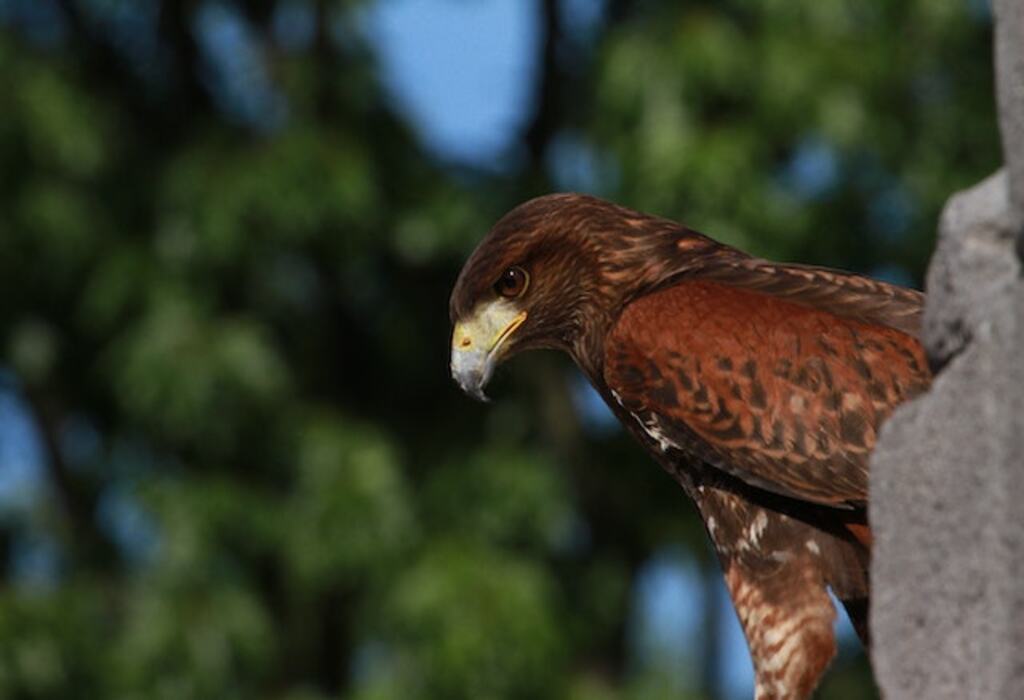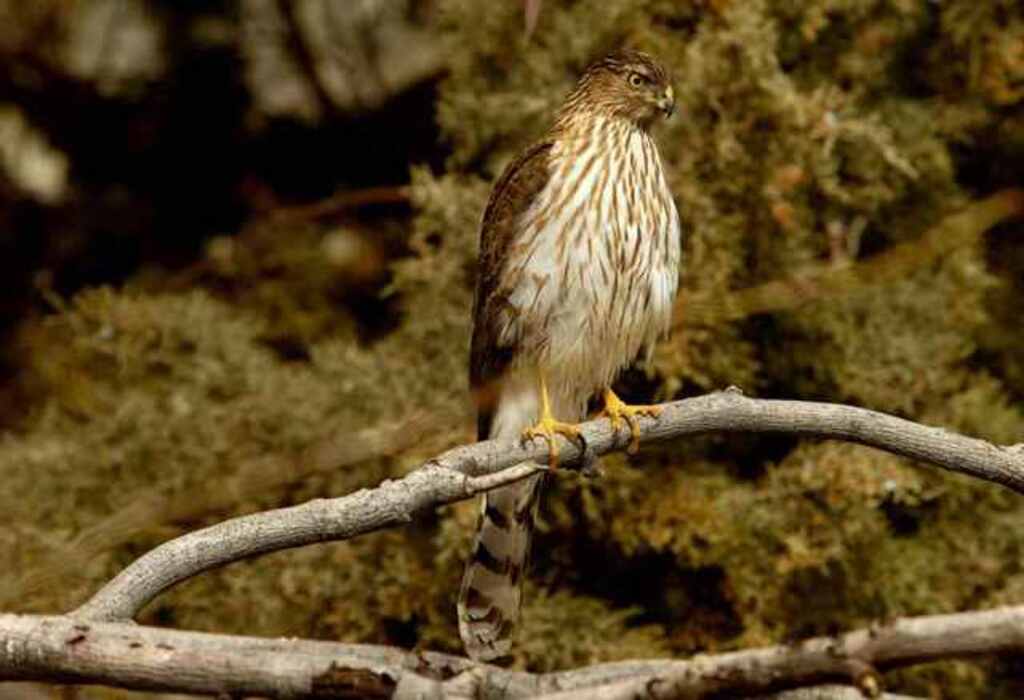Do Hawks Eat Ducks? The age-old question that has puzzled nature enthusiasts, comic strip artists, and perhaps even a few confused ducks. Well, the short answer is yes, hawks do have a hankering for a juicy duck dinner.
But hold onto your feathers! There’s much more to this avian tale than meets the eye. Join us as we unravel the fascinating relationship between these aerial predators and their web-footed counterparts.
Prepare to be enthralled by surprising hunting tactics, duckling escapades, and a feathered showdown you won’t want to miss!
Table of Contents
- 0.1 Brief overview of hawks and ducks
- 0.2 Importance of understanding the relationship between hawks and ducks
- 1 Hawks: The Predators
- 2 Ducks: The Prey
- 3 Do Hawks Eat Ducks?
- 4 Why Do Hawks Eat Ducks?
- 5 Impact on Duck Populations
- 6 Conclusion
- 7 FAQs: Do Hawks Eat Ducks?
- 8 Author
Brief overview of hawks and ducks
Hawks belong to the Accipitridae family, which includes around 200 species worldwide.
These birds have sharp talons and beaks that enable them to catch and kill prey, including small mammals, reptiles, fish, and other birds.
Hawks come in many different shapes and sizes, ranging from diminutive sparrowhawks to large Ferruginous Hawks. Ducks are waterfowl species that belong to the Anatidae family.
There are over 160 duck species worldwide, many of which live in freshwater habitats such as ponds, lakes, rivers or marshes.
Most ducks feed on a diet composed primarily of plants but can also consume insects or small aquatic creatures.
Importance of understanding the relationship between hawks and ducks
Understanding how predators like hawks interact with their prey is essential for managing wildlife populations effectively and maintaining healthy ecosystems overall.
Hawks can help control populations of smaller animals like rodents by consuming them; however, if left unchecked by natural predators or human intervention when necessary (such as hunting), certain types may become overpopulated leading to negative effects on habitat health as well as humans living nearby.
Similarly, while ducks may seem harmless enough at first glance since they do not pose any significant threat to humans directly, they too play an important role in ecosystem health.
For example, ducks can help disperse seeds of aquatic plants and keep insect populations under control.
Knowing how hawks and other predators interact with these birds will help us better understand how to protect the precious natural resources upon which we all depend.
Hawks: The Predators
When we talk about birds of prey, hawks are often the first ones that come to mind. These majestic birds are known for their sharp talons, keen eyesight and impressive flying abilities. Hawks belong to the Accipitridae family, which comprises about 240 species worldwide.
Description of Hawks and Their Characteristics
Hawks are usually medium-sized to large birds with long tails and broad wings. They have hooked beaks that are designed for tearing flesh and strong talons that help them capture and hold onto their prey.
Most hawks have excellent eyesight that allows them to spot small prey from far distances. One of the most distinctive characteristics of hawks is their incredible speed and agility in flight.
Hawks can reach speeds of up to 120 miles per hour when diving towards their prey, making them one of the fastest creatures on earth.
They also have a remarkable ability to soar effortlessly on thermal currents for long periods without flapping their wings.
Types of Hawks That Are Known to Eat Ducks
While there are many different species of hawks around the world, only a few are known to eat ducks regularly. The most common hawk species that preys on ducks include:
- Northern harrier: also known as the marsh hawk, this bird is found in wetlands across north america and eurasia.
- Cooper’s hawk: this medium-sized hawk is found throughout north america and is known for its rapid flight through trees in pursuit of prey.
- Sharp-shinned hawk: another small- to medium-sized hawk found throughout north america, it is named after its short-sharp beak.
- Red-tailed hawk: a large bird of prey found across most of north america, it is known for its distinctive red tail feathers.
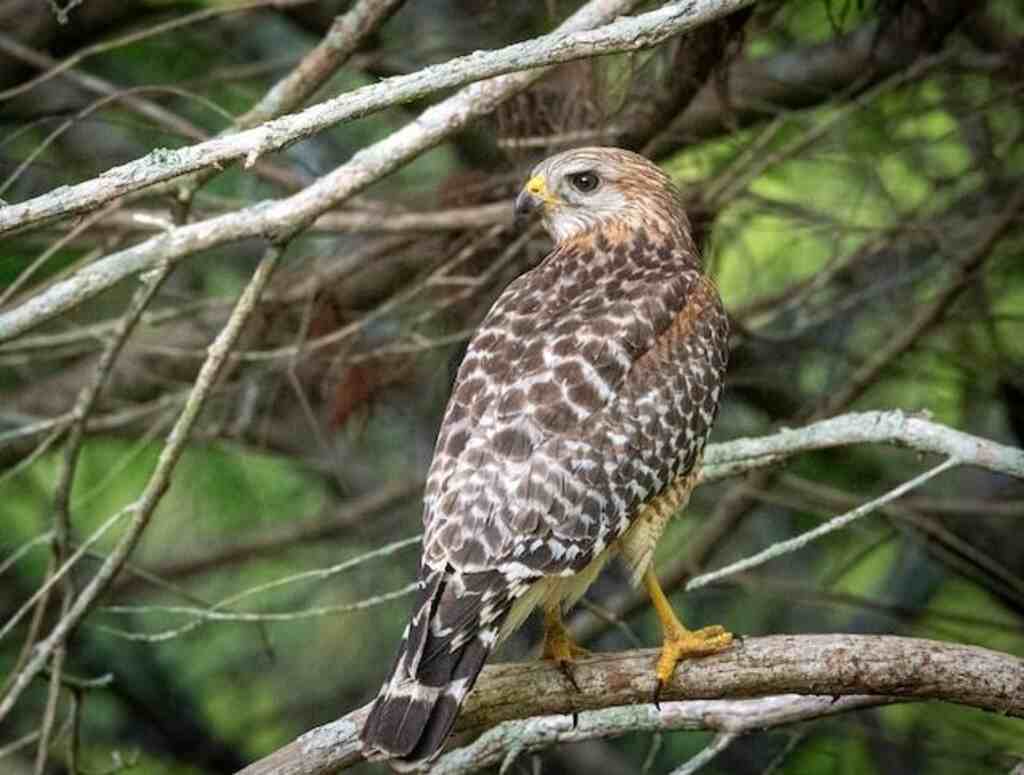
Hunting Techniques Used by Hawks
Hawks are skilled hunters that use a variety of techniques to capture their prey. One common hunting technique is soaring high above the ground and scanning the area for potential prey.
Once they spot their target, they dive down towards it at incredible speeds, using their sharp talons to grasp onto it and kill it with their beak.
Another hunting technique employed by hawks is called “still-hunting”.
This involves perching silently on a branch or fence post near a potential prey area and waiting patiently for a suitable target to come within range.
When the opportunity arises, the hawk launches itself towards its victim with lightning speed.
Some species of hawks are also known to hunt cooperatively in pairs or groups, taking turns chasing and distracting their prey until one can make the final kill.
This is especially common among the northern harrier species.
Hawks are fascinating birds of prey that possess remarkable physical abilities and hunting skills.
While they do not exclusively feed on ducks, several species have been observed preying on them in various habitats across North America and Eurasia.
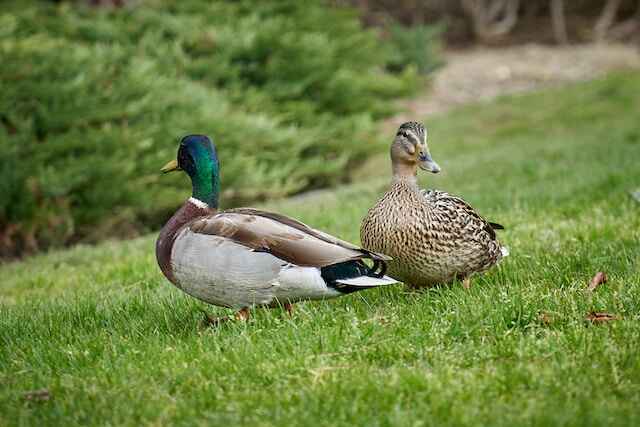
Ducks: The Prey
Overview of duck species
Ducks are a type of waterfowl that belong to the family Anatidae. There are over 120 species of ducks found around the world, with each having its unique physical features and characteristics.
Some examples of popular duck species include mallards, wood ducks, canvasbacks, and pintails.
Mallards are one of the most common duck species found in North America. They have green heads and necks with a white ring around their necks.
Wood ducks are known for their colorful plumage with bright green crests and red eyes. Canvasbacks have a distinctive red head and black chest while pintails have long pointed tails.
Habitat and behavior patterns
Ducks can be found in many different habitats, including wetlands, lakes, rivers, ponds, marshes, and even on the ocean. They require access to water for feeding and nesting purposes. Ducks typically feed on aquatic plants, insects, small fish or crustaceans.
Many duck species migrate from colder northern regions to warmer southern environments during the winter months to find food sources that are not available in their native regions during that time.
During breeding season males will perform elaborate courtship displays to attract a mate while females will lay eggs in nests near water sources which they then incubate until hatching.
Vulnerability to hawk attacks
Ducks are highly vulnerable to attacks from hawks due to their behavior patterns and habitat requirements. As prey animals they tend to spend much of their time in open areas near bodies of water where they can easily be seen by predators like hawks.
Additionally many types of ducks have brightly colored feathers that help them attract mates during breeding season but also make them stand out as targets for predators like hawks who may perceive them as an easy meal.
Ducks are also known to have relatively slow take-off speeds, making them an easy target for hawks looking for a quick meal.
Larger ducks such as mallards, who may weigh over 2 pounds, can still be vulnerable to attack despite their size due to their flight patterns and relatively small wingspans.
Ultimately the vulnerability of ducks to hawk attacks is a result of their natural behavior patterns and physical characteristics which make them easy targets for predators like hawks.

Do Hawks Eat Ducks?
Evidence Supporting the Fact That Hawks Do Eat Ducks
There is no doubt that hawks are skilled predators that use their sharp talons and powerful beaks to capture and kill their prey.
While they are opportunistic hunters that feed on a wide range of animals, including rodents, reptiles, and insects, many species of hawks have been observed preying on ducks.
Here are some sources of evidence that support this fact:
1) Studies Conducted on Hawk Diets
Several studies have been conducted to determine the dietary habits of different hawk species. The results of these studies have shown that many hawks eat ducks as part of their regular diet.
For example, a study published in the Journal of Raptor Research found that Cooper’s Hawks in Utah frequently preyed upon ducks during the winter months when other food sources were scarce.
Another study published in The Auk: Ornithological Advances showed that Red-tailed Hawks in eastern North America also feed on ducks, particularly during migration periods when large flocks of waterfowl are present.
These studies provide strong evidence that hawks do eat ducks.
2) Observations Made by Bird Watchers and Hunters
Bird watchers and hunters who spend time observing wildlife have also reported seeing hawks hunting and killing ducks.
According to an article in Audubon Magazine, bird watcher Keith Kridler witnessed a Northern Harrier attacking a duck at his backyard pond in Texas.
Similarly, hunters who target waterfowl have reported seeing hawks swooping down from above to snatch ducks off the water’s surface or out of midair.
These observations further support the fact that hawks do eat ducks.
3) Historical Accounts of Hawk Attacks on Ducks
Historical records also provide evidence of hawk attacks on ducks.
For example, the book “The Game Birds and Wild Fowl of Sweden and Norway” by Latham, published in 1813, describes how Sparrowhawks often hunt ducks in Scandinavia.
Similarly, the book “Bird Life in Wington” by Winifred Austen, published in 1905, recounts a story of a Peregrine Falcon attacking a duck on a riverbank.
These historical accounts provide further proof that hawks have been preying on ducks for centuries. There is ample evidence to support the fact that hawks do eat ducks.
Why Do Hawks Eat Ducks?
While it is clear that hawks do eat ducks, you may wonder why they choose to do so. Here are some reasons why hawks prey on ducks:
1) Nutritional Value for the Predator
Ducks are an excellent source of protein and other nutrients that hawks need to survive. Waterfowl such as ducks are rich in fat and provide a good source of energy for predators such as hawks.
2) Easy Target Due to Their Behavior Patterns
Ducks are often found in open water or near shorelines where they can be seen from above by soaring hawks. They also tend to gather in large flocks during migration periods when they are particularly vulnerable to predation.
Moreover, many duck species have predictable flight patterns and feeding behaviors that make them easy targets for experienced hunters such as hawks.
3) Competition with Other Predators for Food Sources
Hawks may choose to prey on ducks because other sources of food are scarce or difficult to obtain.
For example, if small mammals such as rodents or rabbits are scarce due to seasonal fluctuations or habitat loss, then hawks may turn to hunting birds such as ducks instead.
In some cases, competition with other predators such as eagles or owls may also drive hawks to target ducks since they are less likely to win a confrontation with these larger predators.
Hawks eat ducks for several reasons, including their nutritional value, vulnerability to predation due to their behavior patterns, and competition with other predators for food sources.
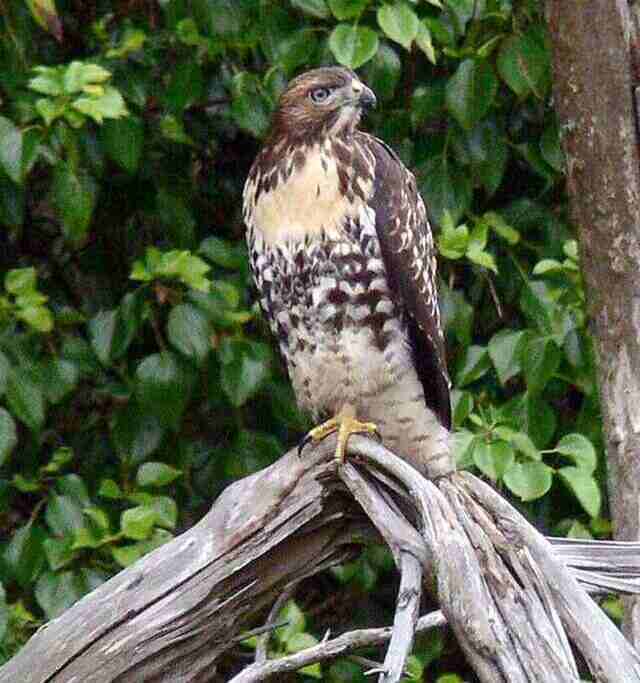
Why Do Hawks Eat Ducks?
Understanding why hawks prey on ducks requires a closer look at their nutritional value, behavior patterns, and competition with other predators. Hawks are opportunistic predators that hunt small mammals, birds, and reptiles.
They have evolved to be efficient hunters with sharp talons and beaks designed for tearing flesh. However, not all prey is created equal – some are more nutritious than others.
Nutritional Value for the Predator
Ducks make a nutritious meal for hawks due to their high protein content. Ducks are rich in vitamins and minerals such as iron, zinc, selenium, vitamin D, and vitamin B-12 that are essential for a hawk’s health and survival.
Although ducks may not provide as much energy as larger prey like rabbits or squirrels, their nutrient-rich meat helps maintain a predator’s metabolic rate.
A hawk’s metabolism is crucial since it determines how much energy it can extract from food. The higher the metabolic rate, the more energy a hawk requires to sustain its activities such as flying or hunting.
Easy Target Due to Their Behavior Patterns
Ducks live near water bodies such as rivers or ponds where they feed on aquatic plants and insects. This habitat makes them an easy target for predators since they have limited escape routes when attacked from above by hawks.
In addition to this vulnerability due to their habitat preference, ducks also have behavior patterns that make them easier targets for predators like hawks.
For instance, ducks tend to flock together in large groups which increases their visibility to predators.
Furthermore, ducks often swim in open waters making them easy pickings for aerial attacks by hawks who can swoop down quickly from above without warning.
Competition with Other Predators for Food Sources
Hawks compete with other predators for food sources. This competition includes other bird predators like eagles, owls, and falcons that also prey on ducks.
The competition for food resources may determine which predator gets to feed on ducks since they may not be plentiful enough to sustain all the predators.
Furthermore, hawks must also contend with environmental factors such as weather conditions that could affect their food supply.
During harsh winters when food is scarce, hawks may resort to preying on ducks since they are easier targets than other prey species.
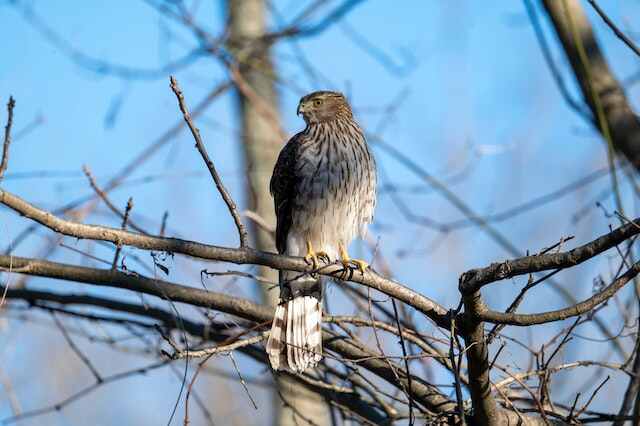
Impact on Duck Populations
Effects that hawk predation has on duck populations
The impact of hawk predation on duck populations is a subject of interest for many environmentalists. While hawks are an important part of the ecosystem and help regulate the population of other animals, their predation on ducks can have negative effects.
Hawks can cause a decline in duck populations as they prey on ducklings and adult ducks alike.
One impact of hawk predation is a decrease in the breeding success rate of ducks. Hawks often target nesting birds, which can lead to the destruction of eggs and disruption of nests.
This can result in fewer ducks being born each year, which can lead to long-term declines in population numbers. Another effect is that hawk predation can alter the behavior patterns of ducks.
Ducks may avoid certain areas or change their behavior to avoid being preyed upon by hawks, which can affect their ability to find food or mate with other ducks.
In addition, hawks have been known to target male ducks during mating season, which can result in lower reproduction rates for certain species.
This decrease in breeding success could lead to genetic diversity loss and further declines in population numbers.
Furthermore, the effects of hawk predation extend beyond just directly impacting duck populations but also indirectly affecting other organisms within their ecosystem that depend on them for food or habitat.
Conclusion
While hawks are an important part of the ecosystem and play a vital role in regulating animal populations, their predatory habits towards ducks have significant impacts on duck populations.
The effects range from decreased breeding success rates to altered behavior patterns resulting from fear towards them.
However, it’s important to note that predators like hawks are critical components within ecosystems and help keep animal populations healthy overall through natural selection processes.
FAQs: Do Hawks Eat Ducks?
Do hawks specifically target ducks as prey?
Yes, some species of hawks, such as the Red-tailed Hawk and Cooper’s Hawk, do prey on ducks. While hawks have a diverse diet, ducks are among the prey they target due to their availability and vulnerability.
How do hawks catch ducks in flight?
Hawks employ various hunting techniques to catch ducks in flight. They use their exceptional speed, agility, and sharp talons to pursue and seize ducks mid-air. Hawks often surprise their prey from above or employ strategic tactics to ambush ducks during flight.
Are baby ducks more vulnerable to hawk attacks?
Yes, baby ducks, known as ducklings, are more vulnerable to hawk attacks. Their smaller size, limited mobility, and lack of experience make them easier targets. Hawks take advantage of these vulnerabilities when searching for prey, including ducklings.
Do hawks hunt ducks in water or only in the air?
While hawks are primarily aerial hunters, they can also hunt ducks in water. Some species, like the Northern Harrier, are known to skim over wetlands and marshes, targeting ducks swimming or foraging on the water’s surface.
Are there any strategies ducks use to avoid hawk predation?
Ducks have developed certain strategies to minimize the risk of hawk predation. They often form flocks, increasing their chances of detecting an approaching hawk. Ducks also rely on vigilance, quick reactions, and taking cover in dense vegetation or diving underwater to escape from hawks.

